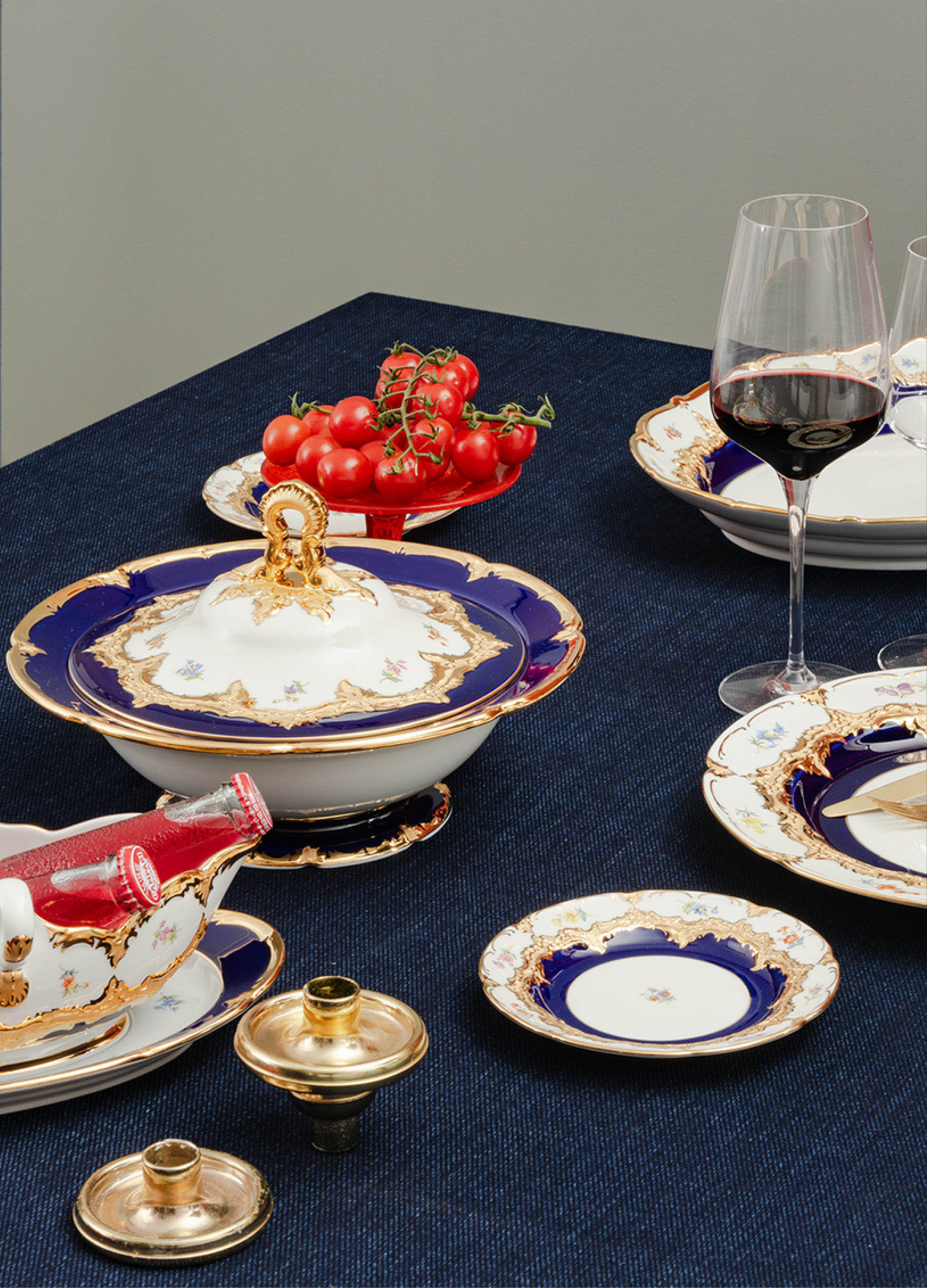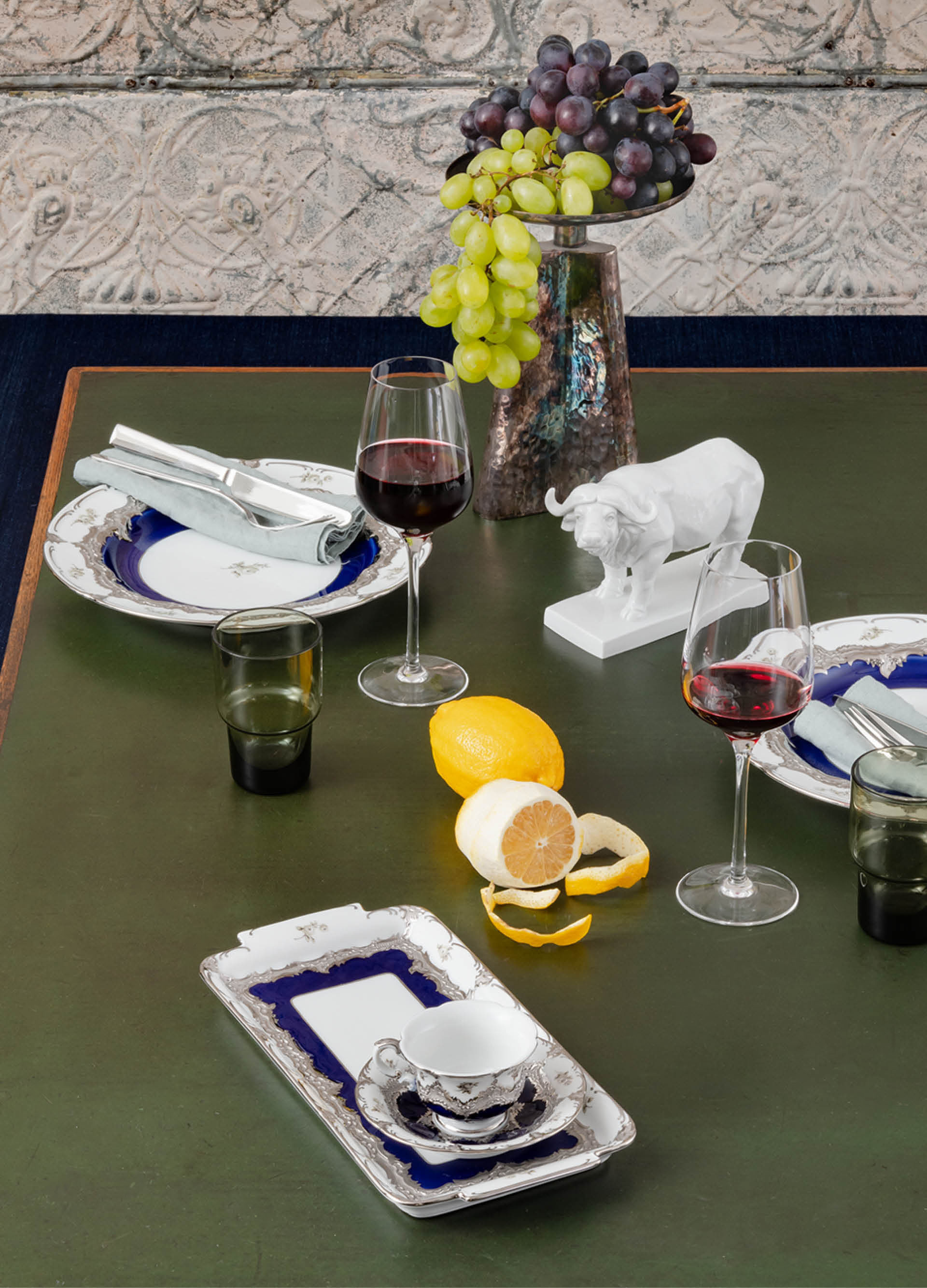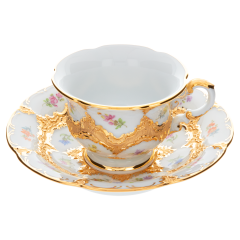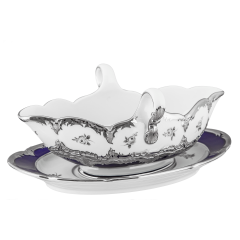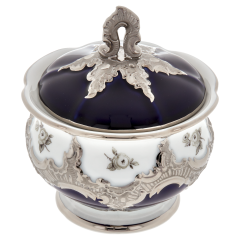Christmas Offer from MEISSEN – Enjoy Exclusive Savings! Learn More.
- Home
- B-Form
B-Form
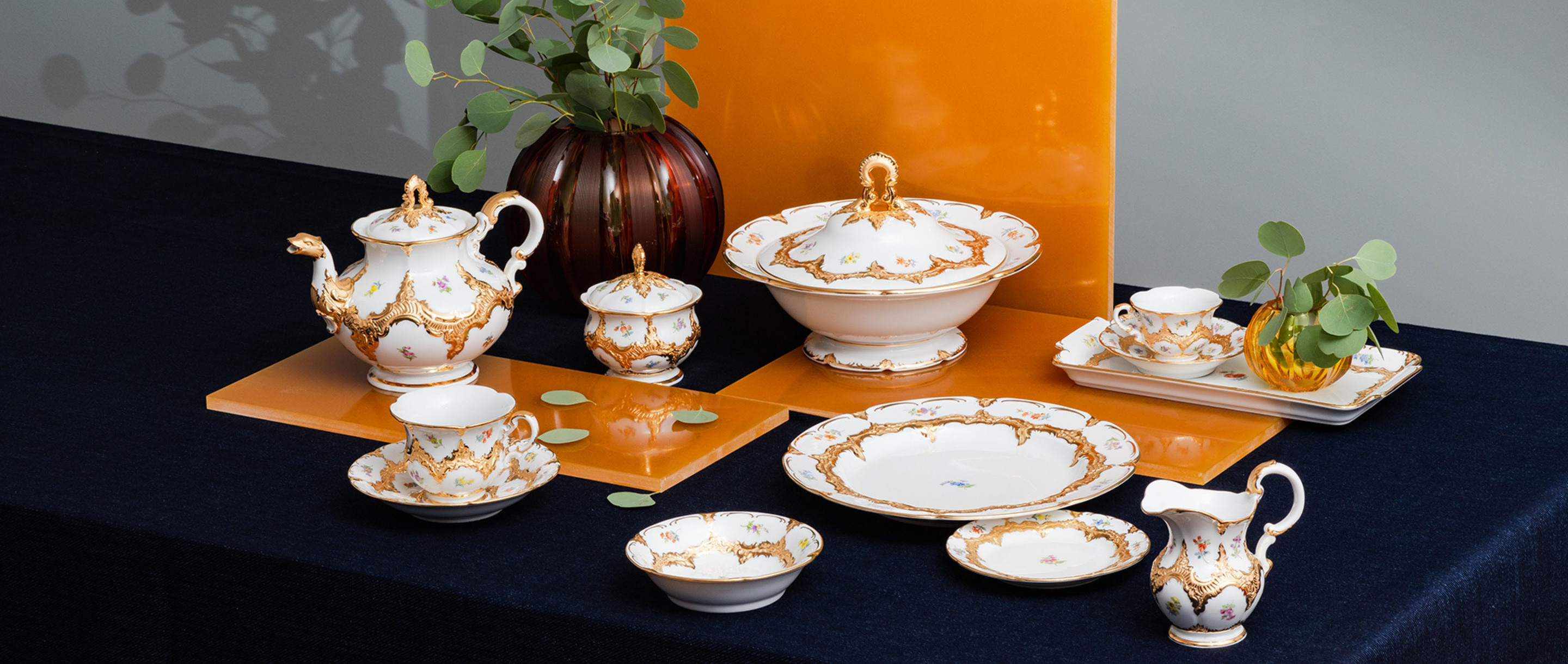
- 01
 Bowl with lid, Shape "B-Form", Strewn flowers, gold (bronze coloured), light, V 1,2 lDeliverable€2,681.00Excl. 0% VAT , excl. Shipping Cost
Bowl with lid, Shape "B-Form", Strewn flowers, gold (bronze coloured), light, V 1,2 lDeliverable€2,681.00Excl. 0% VAT , excl. Shipping Cost - 02
 Espresso cup & saucer, Shape "B-Form", Strewn flowers, gold (bronze coloured), light, V 0,1 lDeliverable€839.00Excl. 0% VAT , excl. Shipping Cost
Espresso cup & saucer, Shape "B-Form", Strewn flowers, gold (bronze coloured), light, V 0,1 lDeliverable€839.00Excl. 0% VAT , excl. Shipping Cost - 03
 Gravy boat, Shape "B-Form", Strewn Roses, white-grey, royal blue, shiny platinum, V 0,45 lExclusive manufacturing€2,260.00Excl. 0% VAT , excl. Shipping Cost
Gravy boat, Shape "B-Form", Strewn Roses, white-grey, royal blue, shiny platinum, V 0,45 lExclusive manufacturing€2,260.00Excl. 0% VAT , excl. Shipping Cost - 04
 Dinner Plate, Shape "B-Form", Strewn Roses, white-grey, royal blue, shiny platinum, Ø 22 cmExclusive manufacturing€839.00Excl. 0% VAT , excl. Shipping Cost
Dinner Plate, Shape "B-Form", Strewn Roses, white-grey, royal blue, shiny platinum, Ø 22 cmExclusive manufacturing€839.00Excl. 0% VAT , excl. Shipping Cost - 05
 Sugar Bowl, Shape "B-Form", Strewn Roses, white-grey, royal blue, shiny platinum, H 12 cmExclusive manufacturing€839.00Excl. 0% VAT , excl. Shipping Cost
Sugar Bowl, Shape "B-Form", Strewn Roses, white-grey, royal blue, shiny platinum, H 12 cmExclusive manufacturing€839.00Excl. 0% VAT , excl. Shipping Cost
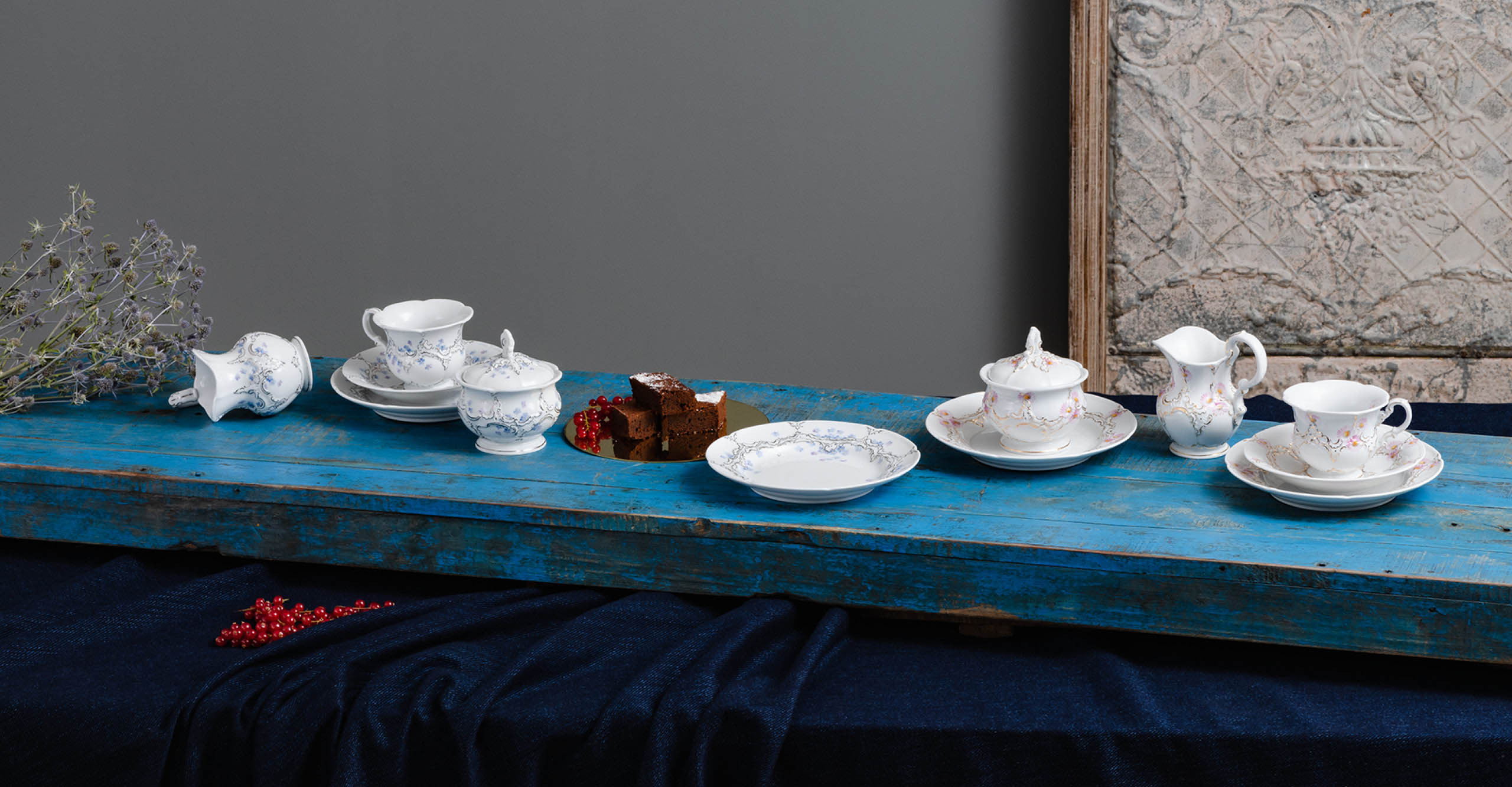
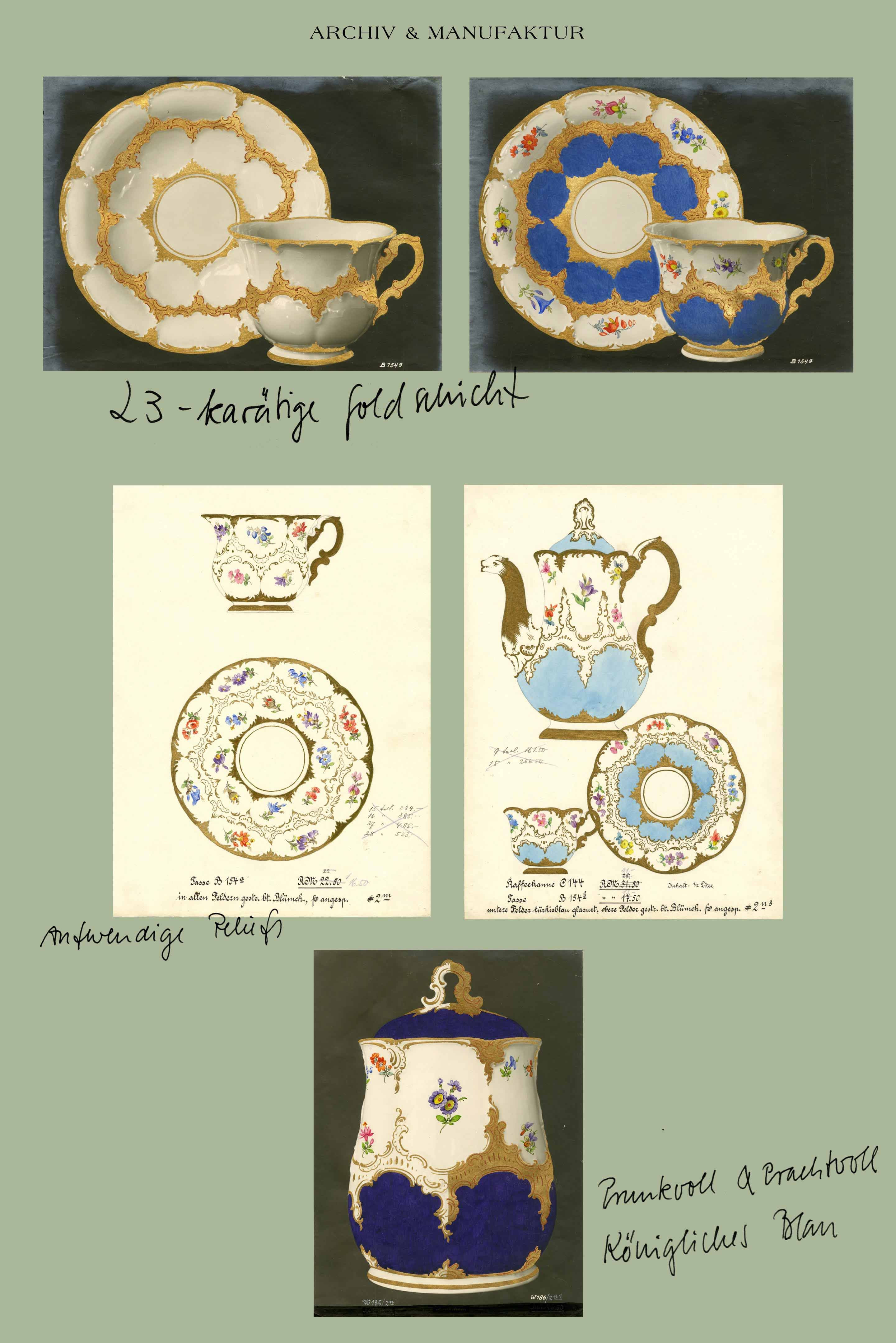
-
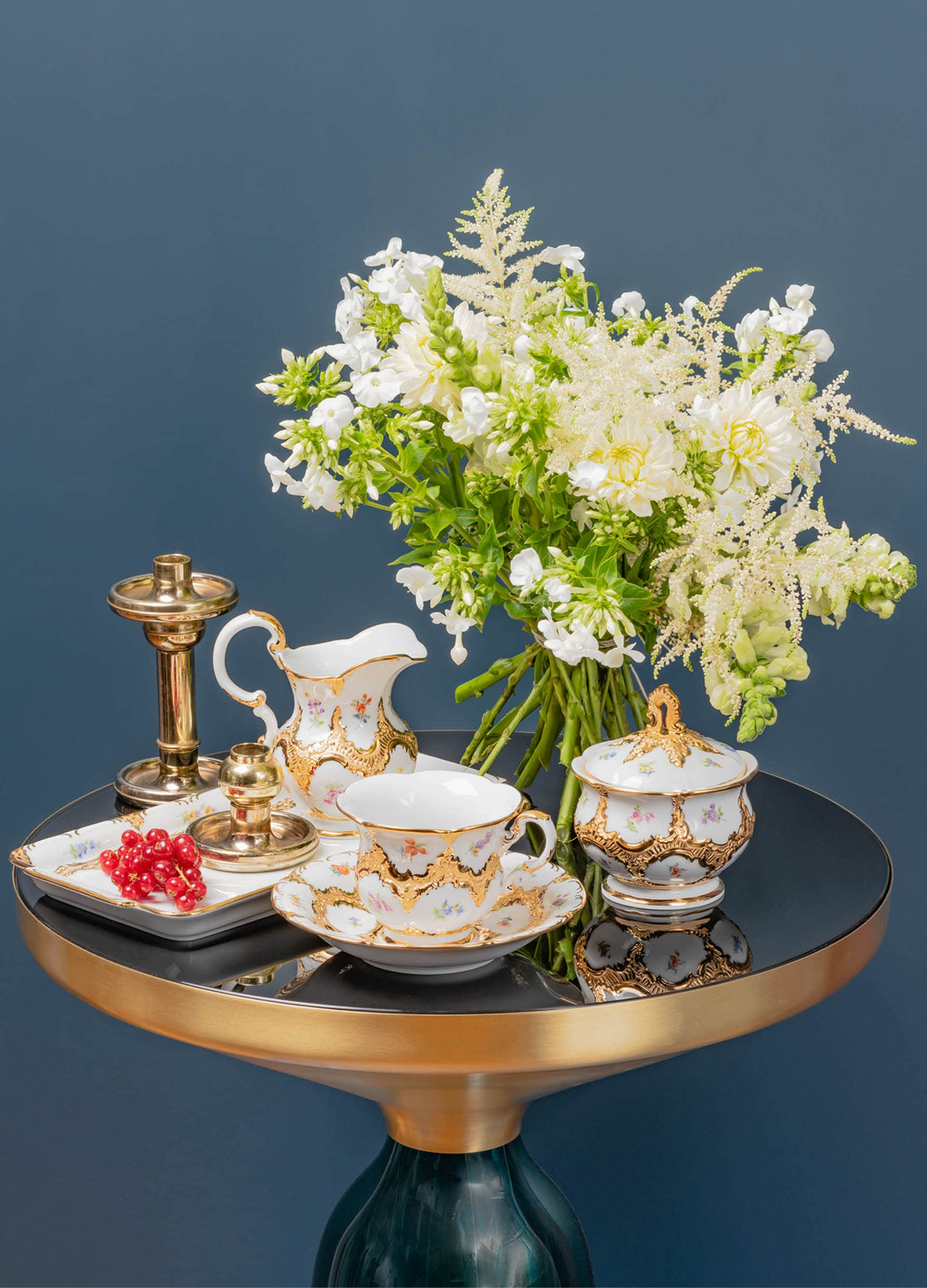 GOLD BRONZE WITH STREWN FLOWERSLush and luminous gleams the high-karat gold bronze as it drapes over the sumptuous reliefs, rims, and ornamentation of the "B-Form" service. To this day, this embellishment is still applied by hand onto the unglazed surface of each individual plate, cup, and saucier. During the third firing, the gold takes on its unique, semi-matte shimmer. It is the harmonious interplay of the pure white porcelain with those channels of gold that lends this service its particular allure.
GOLD BRONZE WITH STREWN FLOWERSLush and luminous gleams the high-karat gold bronze as it drapes over the sumptuous reliefs, rims, and ornamentation of the "B-Form" service. To this day, this embellishment is still applied by hand onto the unglazed surface of each individual plate, cup, and saucier. During the third firing, the gold takes on its unique, semi-matte shimmer. It is the harmonious interplay of the pure white porcelain with those channels of gold that lends this service its particular allure. -
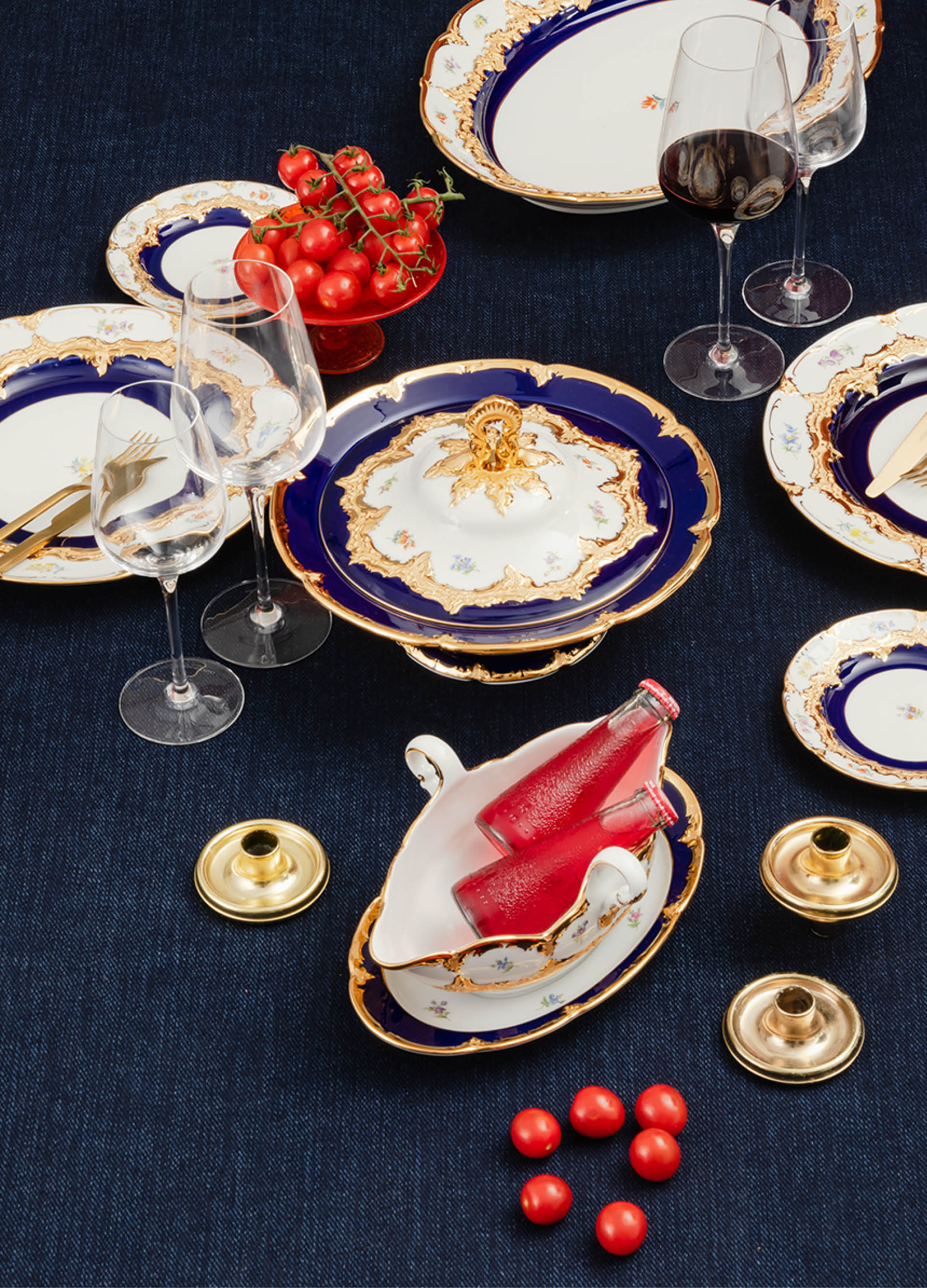 Royal Blue Gold Bronze with Strewn FlowersThe "Strewn Flowers" are one of the most beloved decorative motifs of the Meissen manufactory. Created at the start of the 19th century, the design is typical of the Biedermeier era. The impetus was to feature the natural beauty of blossoms and flowers and thus pull away for the first time from archetypal East Asian designs, or "Flowers of the Indies". As a variant of the "German Flowers" painting style, this Meissen decor exhibits certain unique characteristics. Strewn around a larger central flower are a variety of smaller blossoms, which painters can select from amongst three dozen flower motifs. Each had its own symbolism during the Biedermeier era and was used to express thoughts and sentiments. Painted on the porcelain by hand, the fine detail of the "Strewn Flowers" lends the "B-Form" service particular vitality and an innate symbolism.
Royal Blue Gold Bronze with Strewn FlowersThe "Strewn Flowers" are one of the most beloved decorative motifs of the Meissen manufactory. Created at the start of the 19th century, the design is typical of the Biedermeier era. The impetus was to feature the natural beauty of blossoms and flowers and thus pull away for the first time from archetypal East Asian designs, or "Flowers of the Indies". As a variant of the "German Flowers" painting style, this Meissen decor exhibits certain unique characteristics. Strewn around a larger central flower are a variety of smaller blossoms, which painters can select from amongst three dozen flower motifs. Each had its own symbolism during the Biedermeier era and was used to express thoughts and sentiments. Painted on the porcelain by hand, the fine detail of the "Strewn Flowers" lends the "B-Form" service particular vitality and an innate symbolism. -
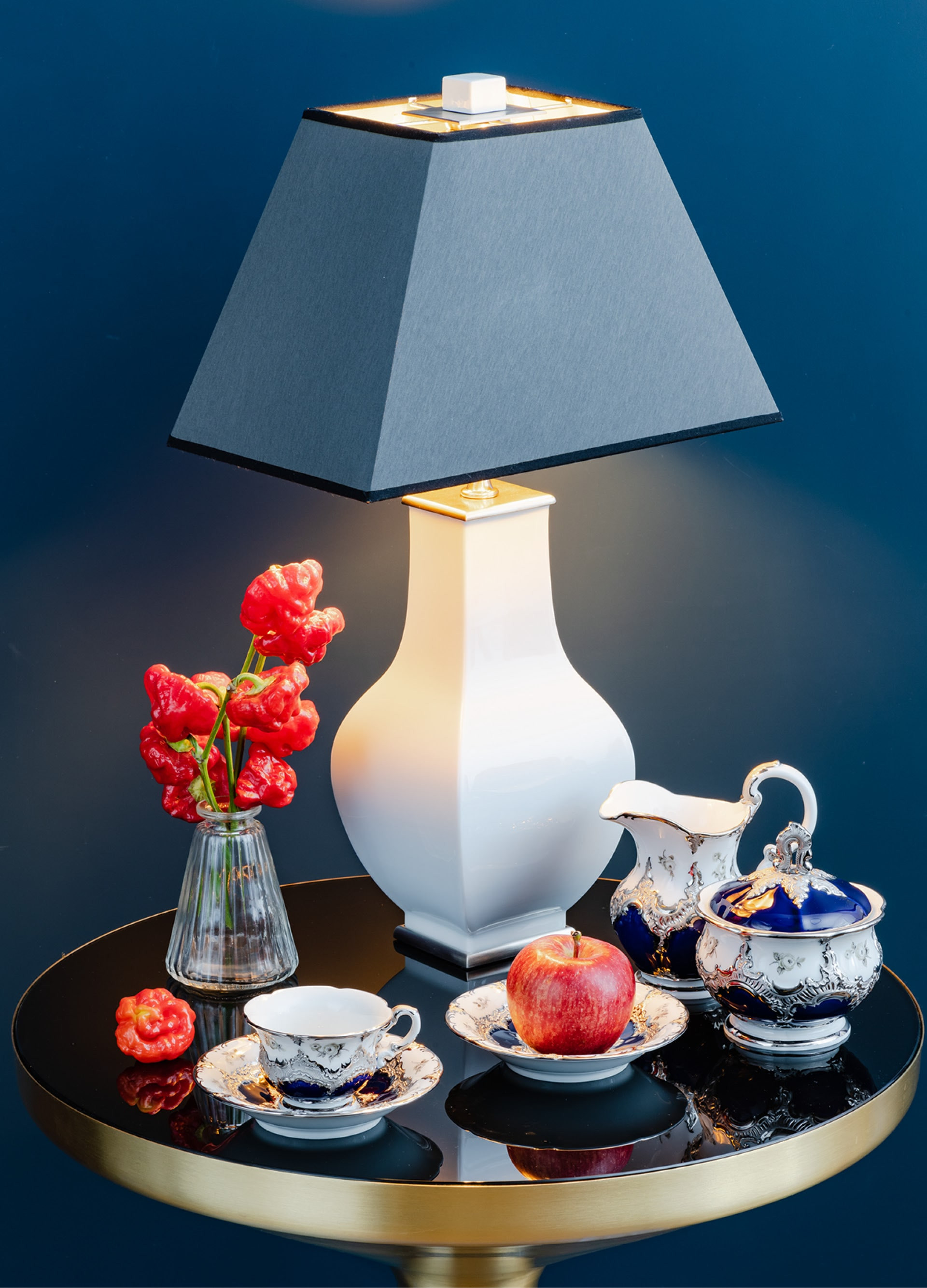 ROYAL BLUE PLATINUM WITH STREWN ROSESFor what would have this year been Leuteritz’s 200th birthday, his successors have designed a new set that hits a more modern note of opulence – glazed royal blue with platinum and scattered roses in a sepia tone, this service set combines the splendour of banquets of the past precisely with a modern expression of lavishness. The platinum, used for the very first time on this set, lends an elegant and modern note to the classically ostentatious of the gold pieces. In combination with the sepia paintwork, the platinum boasts a more modest and somewhat reserved effect. The colour allows the motifs to shine in a brand-new light, merging historical heritage with a contemporary sensibility.
ROYAL BLUE PLATINUM WITH STREWN ROSESFor what would have this year been Leuteritz’s 200th birthday, his successors have designed a new set that hits a more modern note of opulence – glazed royal blue with platinum and scattered roses in a sepia tone, this service set combines the splendour of banquets of the past precisely with a modern expression of lavishness. The platinum, used for the very first time on this set, lends an elegant and modern note to the classically ostentatious of the gold pieces. In combination with the sepia paintwork, the platinum boasts a more modest and somewhat reserved effect. The colour allows the motifs to shine in a brand-new light, merging historical heritage with a contemporary sensibility.
- 01
 Bowl with lid, Shape "B-Form", Strewn flowers, gold (bronze coloured), light, V 1,2 lDeliverable€2,681.00Excl. 0% VAT , excl. Shipping Cost
Bowl with lid, Shape "B-Form", Strewn flowers, gold (bronze coloured), light, V 1,2 lDeliverable€2,681.00Excl. 0% VAT , excl. Shipping Cost - 02
 Espresso cup & saucer, Shape "B-Form", Strewn flowers, gold (bronze coloured), light, V 0,1 lDeliverable€839.00Excl. 0% VAT , excl. Shipping Cost
Espresso cup & saucer, Shape "B-Form", Strewn flowers, gold (bronze coloured), light, V 0,1 lDeliverable€839.00Excl. 0% VAT , excl. Shipping Cost - 03
 Gravy boat, Shape "B-Form", Strewn Roses, white-grey, royal blue, shiny platinum, V 0,45 lExclusive manufacturing€2,260.00Excl. 0% VAT , excl. Shipping Cost
Gravy boat, Shape "B-Form", Strewn Roses, white-grey, royal blue, shiny platinum, V 0,45 lExclusive manufacturing€2,260.00Excl. 0% VAT , excl. Shipping Cost - 04
 Dinner Plate, Shape "B-Form", Strewn Roses, white-grey, royal blue, shiny platinum, Ø 22 cmExclusive manufacturing€839.00Excl. 0% VAT , excl. Shipping Cost
Dinner Plate, Shape "B-Form", Strewn Roses, white-grey, royal blue, shiny platinum, Ø 22 cmExclusive manufacturing€839.00Excl. 0% VAT , excl. Shipping Cost - 05
 Sugar Bowl, Shape "B-Form", Strewn Roses, white-grey, royal blue, shiny platinum, H 12 cmExclusive manufacturing€839.00Excl. 0% VAT , excl. Shipping Cost
Sugar Bowl, Shape "B-Form", Strewn Roses, white-grey, royal blue, shiny platinum, H 12 cmExclusive manufacturing€839.00Excl. 0% VAT , excl. Shipping Cost
-
01
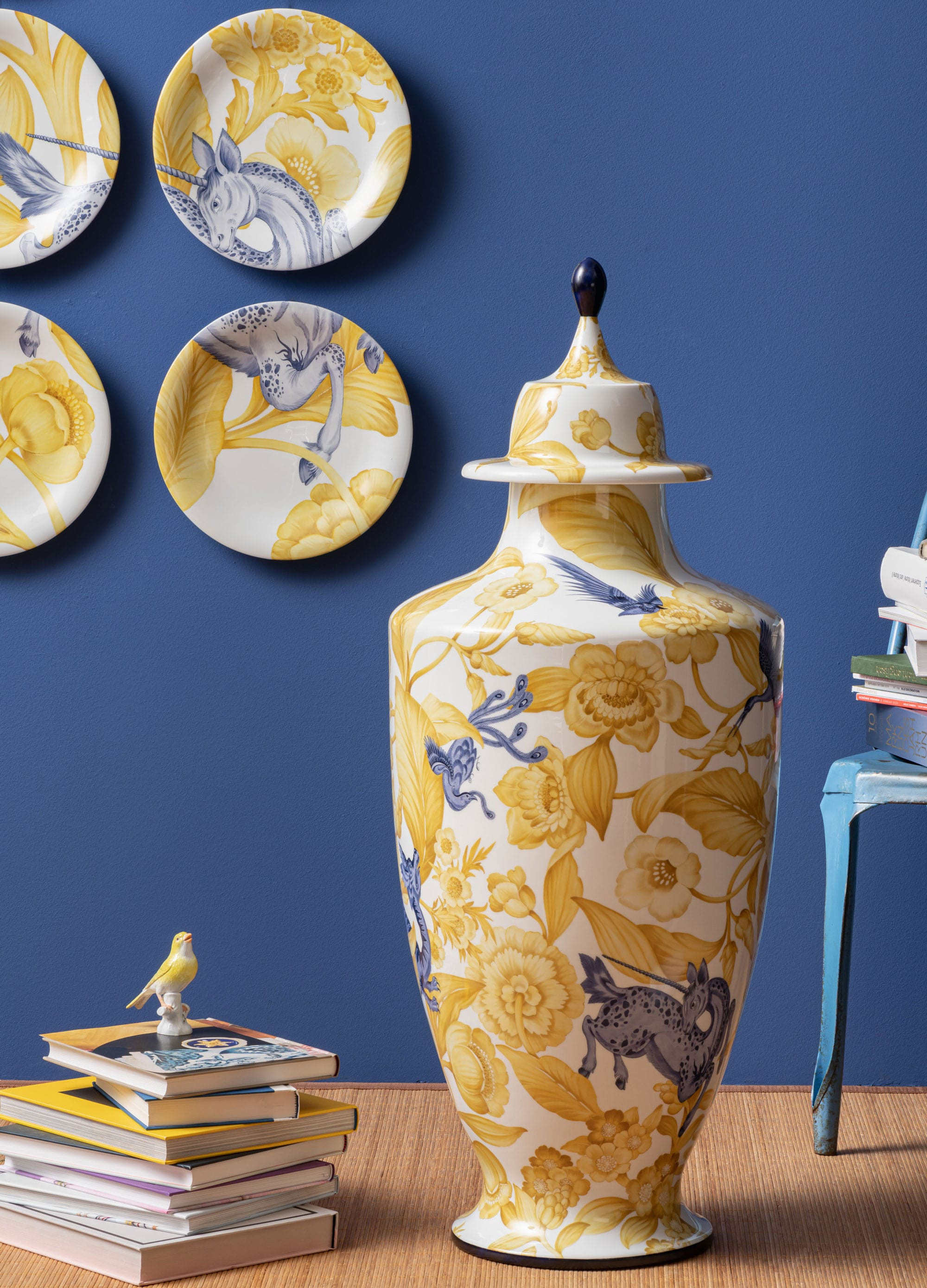 Limited MasterworksThe collection presents historic reissues of exceptional pieces by great artists who have shaped the manufactory over centuries. In 2018: Ernst August Leuteritz, Max Adolf Pfeiffer and Jörg Danielczyk
Limited MasterworksThe collection presents historic reissues of exceptional pieces by great artists who have shaped the manufactory over centuries. In 2018: Ernst August Leuteritz, Max Adolf Pfeiffer and Jörg Danielczyk -
02
 Chris AntemannBaroque figurines, peppered with satirical quips and erotic innuendos – Chris Antemann has created for MEISSEN an extensive collection of limited-edition art works
Chris AntemannBaroque figurines, peppered with satirical quips and erotic innuendos – Chris Antemann has created for MEISSEN an extensive collection of limited-edition art works
-
Personal ConsultationPersonal consultation – For general inquiries regarding our collections, the manufactory, or our services, please call our customer service at +49.3521 468 6630
-
Contact via E-mailWe’ve got mail – For comprehensive information on special commissions or certificates of authenticity, please send an e-mail to our customer service at service@meissen.com or use the contact sheet
-
Store ConsultingFace-to-Face – Our MEISSEN Stores carry all of our latest collections to experience firsthand. Knowledgeable associates are there to provide you with more information
Subscribe to the newsletter
Get 10% discount* on your next online order
Do you have questions about the manufactory, our product range or special designs - we are happy to advise you!
Consultation hours:
Mon-Fri: 9am - 6pm
Sat: 10am - 4pm
X






